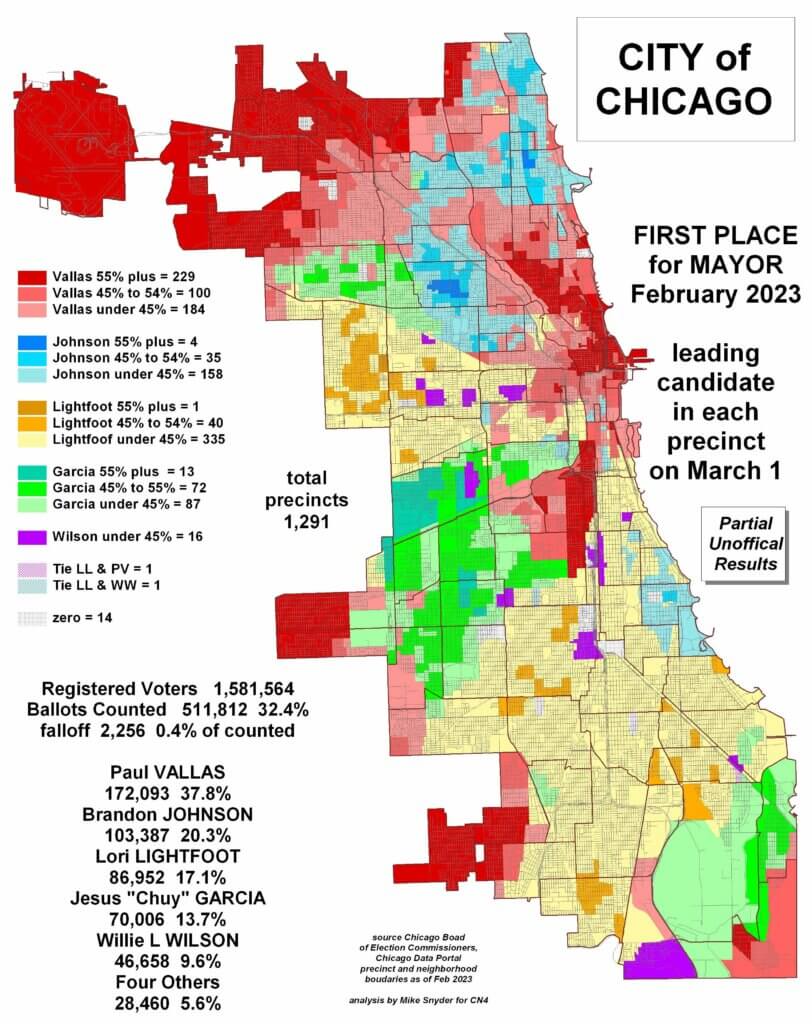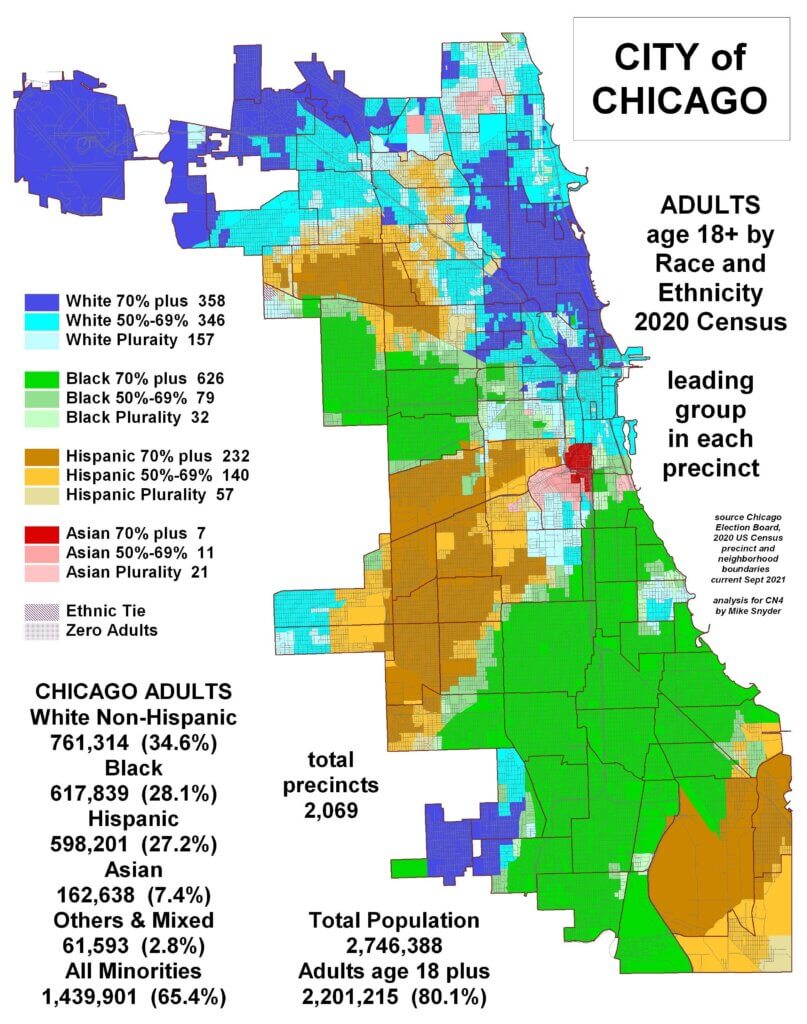Chicago Mayoral data maps and analysis
The political world was shocked Tuesday night with news that hasn’t happened in Chicago in four decades- the sitting mayor was knocked out of the race.
This hasn’t happened since Harold Washington beat then-mayor Jane Byrne in the February 1983 Democratic primary. We decided to take a deeper dive and see where Paul Vallas won – and the path for Vallas and Brandon Johnson in the run-off.

Here’s some of our quick takes on the race:
- Former Chicago Schools CEO Paul Vallas (33.7%) emerges with the strongest base, indeed virtually monolithic in many precincts concentrated in the outer AND whiter and Asian wards, while putting in a stronger than expected performance in Hispanic wards. His challenge will be expanding this support while NOT being straight-jacketed as a Republican. Four years ago, Vallas came in 9th out of 14 candidates with 5% of the vote; he certainly learned the lessons from that race.
- Cook County Commissioner Brandon Johnson (20.3%) takes the key 2nd spot, however with only a minimal (albeit critical) geographic base (North & near-Northwest side) due to competition from Vallas and Lightfoot, along with other hopefuls. Moving forward, his prospects of surmounting Vallas’s current lead depend on consolidating the lion’s share of the Primary losers PLUS mobilizing others who did not cast ballots in February. Johnson’s campaign was fueled by a million-dollar cash infusion from the American Federation of Teachers.
- Mayor Lori Lightfoot’s (17.0%) incumbency was less than helpful, even in her own South and West side base as demonstrated by her winning a majority in a (literal) handful of precincts; which way her “last hurrah” supporters break in the April runoff showdown between Vallas and Johnson is anyone’s guess. Lightfoot spent much of the campaign pushing back on Garcia and attempting to set up a general election between her and Vallas. Interestingly enough, Lightfoot’s 17.0% of the vote in 2023 is only slightly below her vote of 17.5% in 2019 when she was the leading vote getter; the major difference was the presence of a larger number of credible candidates that year.
- Congressman Jesus “Chuy” Garcia’s (13.7%) base was both stronger in concentration but smaller in voting clout than Johnson or Lightfoot, reflecting his ethnic appeal with Latino voters, especially on the West Side and other predominately Hispanic areas. As in the last election, these voters are now up for grabs, and could determine the final outcome IF they skew significantly to one of the remaining choices. Eight years ago, Garcia received 34% in the February primary and forced incumbent Mayor Rahm Emanuel to an April run-off, attracting a national progressive following.
- Wealthy perennial candidate Willie Wilson (9.5%) was only one of the other mayoral hopefuls to carry any precincts in the initial results, albeit with smallish pluralities; its significance is that it came substantially out of Lightfoot’s hide, and were clearly a factor in knocking the incumbent out of contention. Wilson also got fewer votes than he received in 2019 when he garnered 10.6%. Maybe he’ll take his gas card giveaways national with another presidential run.
For those not familiar with Chicago and Chicago politics, it’s critical to note how race and ethnicity play a role in these outcomes. Even today, Chicago remains one of the most segregated big cities in America – check out this map, using 2020 census data.

So, you have Vallas with about a third of the vote; the two major progressive candidates, Johnson and Garcia, with about a third of the vote, and the remaining third going to Lightfoot, Wilson or someone else. Those voters are mostly Black and without a favored candidate, will be highly targeted as well as less progressive Garcia voters.
Prediction – this race will be very close in April.
In politics, the strategy is often easy; what is hard is understanding the race. For both Mayor Lightfoot and Garcia, they clearly fell victim to this as they never understood what the race was about.